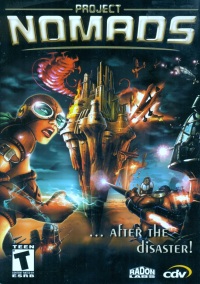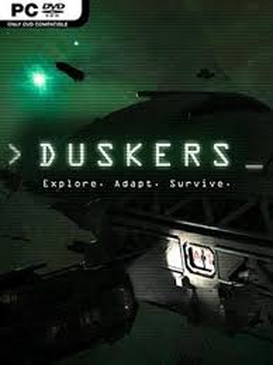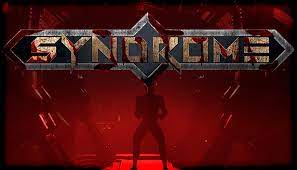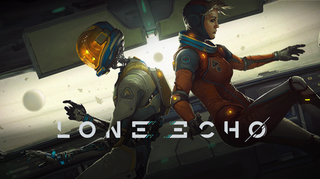Battlefield is a military first-person shooter video game franchise primarily developed by Swedish company EA DICE and published by American company Electronic Arts. The series mainly focuses on online multiplayer, with gameplay taking place across large maps, and emphasizes teamwork and combined arms warfare.

Project Nomads is a 2002 computer game by Radon Labs released for Windows and macOS. It is set on the fictional planet Aeres, a world of floating islands which are the remnants of the planet from before it exploded. Few surviving inhabitants settle on drifting fragments of Aeres following its explosion. The player character is a nomad tasked with wandering across these islands, discovering mysterious artifacts and exploring the ruins of the long-dead race of Master Builders, a group of highly skilled and influential characters within the game's world. These characters possess exceptional knowledge and expertise in constructing and manipulating the floating islands that make up the game's environment. The only place to fall to is the Sea of Flames, the utmost depth of this new world.

Sins of a Solar Empire is a 2008 science fiction real-time strategy video game developed by Ironclad Games and published by Stardock Entertainment for Microsoft Windows operating systems. It is a real-time strategy (RTS) game that incorporates some elements from 4X games; its makers describe it as "RT4X". Players are given control of a spacefaring empire in the distant future, and are tasked with conquering star systems using military, economic and diplomatic means.

Haegemonia: Legions of Iron, or Hegemonia: Legions of Iron, is a 3D real-time strategy game developed by Digital Reality for Microsoft Windows, and by Microïds for OS X, iOS, and Android.

Sid Meier's Pirates! is a 2004 strategy, action and adventure video game developed by Firaxis Games. A remake of Sid Meier's earlier 1987 game of the same name, it was originally published by Atari Interactive, but in May 2005 2K acquired the rights to the title from Atari's parent company Infogrames and later went on to publish console and handheld ports of the game.

Red Faction: Guerrilla is a third-person shooter video game developed by Volition and published by THQ. It was released for the PlayStation 3 and Xbox 360 in June 2009 and for Windows in September 2009. The game is the third installment in the Red Faction series. A remastered version titled Red Faction: Guerrilla Re-Mars-tered with improved graphics was released worldwide on July 3, 2018, for the PlayStation 4, Windows and Xbox One, and on July 2, 2019, for the Nintendo Switch.

Cryostasis: Sleep of Reason is a 2008 psychological horror video game developed by Action Forms for Microsoft Windows.

Star Trek: Voyager – Elite Force is a first-person shooter video game developed by Raven Software and published by Activision. The game was originally released on September 15, 2000 for Windows and Mac OS. A port for Mac OS developed by Westlake Interactive and published by Aspyr Media was released on November 20, 2002. Elite Force was ported to the PlayStation 2 by Pipe Dream Interactive and published by Majesco Entertainment on December 11, 2001.

Risen 2: Dark Waters is a fantasy-themed action role-playing game published by Deep Silver as the sequel to Risen by Piranha Bytes. It is a pirate themed game set in a fantasy world where monsters, ancient gods, and voodoo magic exist.

FTL: Faster Than Light is a roguelike game created by indie developer Subset Games, which was released for Windows, MacOS, and Linux in September 2012. In the game, the player controls the crew of a single spacecraft, holding critical information to be delivered to an allied fleet, while being pursued by a large rebel fleet. The player must guide the spacecraft through eight sectors, each with planetary systems and events procedurally generated in a roguelike fashion, while facing rebel and other hostile forces, recruiting new crew, and outfitting and upgrading their ship. Combat takes place in pausable real time, and if the ship is destroyed or all of its crew lost, the game ends, forcing the player to restart with a new ship.

The Technomancer is an action role-playing video game, developed by Spiders and published by Focus Home Interactive. The game is set within the same universe as Spiders' previously developed game, Mars: War Logs. Olivier Deriviere scored The Technomancer, a term previously derived from 1989 RPG "Shadowrun" for a decker who datajacks into the matrix using a VR controller.

Divinity: Original Sin II is a role-playing video game developed and published by Larian Studios. The sequel to 2014's Divinity: Original Sin and the fifth main entry in the Divinity series, the game was released for Microsoft Windows in September 2017. The player controls a "Godwoken", a Sourcerer who can harness and use a powerful magic known as Source, and becomes a pivotal figure in the fight against the Voidwoken, monstrous creatures who wreak havoc in the medieval fantasy world of Rivellon.

Duskers is a strategy video game by independent developer Misfits Attic. It was released on May 18, 2016, for Linux, OS X, and Microsoft Windows.

Laserlife is a rhythm game developed and published by Choice Provisions. It was released in September 2015 for PlayStation 4 as well as Windows and Mac OS X via digital distribution service Steam, and in October 2015 for Xbox One.

Syndrome is a science fiction survival horror video game developed by Camel 101 and Bigmoon Entertainment for Microsoft Windows, PlayStation 4, Xbox One, Mac, Linux and Nintendo Switch. It takes place inside the "Valkenburg", a drifting spaceship where something has gone wrong, killing most of its crew. The player controls a character that wakes up in the spaceship with no memory of what happened. The player's actions are not limited to running and hiding; in Syndrome the player can also engage in combat, although the available weapons and ammunition are limited. The game also plays heavily with psychological horror: the main character is constantly plagued by visual and auditory hallucinations, never knowing what is real and what is not.

Star Trek: Bridge Crew is a virtual-reality action-adventure video game developed by Red Storm Entertainment and published by Ubisoft for Microsoft Windows, PlayStation 4, and Oculus Quest.

Cosmonautica is a video game that blends aspects of life simulation and space trading. Players take control of a spaceship and crew it with characters, each of which has their own needs and skills. By acquiring credits through missions, players can expand and customize their ship. It was released via early access on PC in 2014, and the retail version was released in July 2015 for Microsoft Windows, iOS, and Android.

Lone Echo is a 2017 virtual reality adventure game developed by Ready At Dawn, and published by Oculus Studios. Set aboard a space station orbiting Saturn, it allows players to move in zero-gravity by grabbing and pushing off of the environment. In addition to the narrative single-player game, the title includes a team-based multiplayer sports mode called Echo Arena, which was also released as a stand-alone game. A sequel, Lone Echo II, was announced in 2018 and released on October 12, 2021.

Starfield is a 2023 action role-playing game developed by Bethesda Game Studios and published by Bethesda Softworks. In the game, the player character joins a group of space explorers who must venture to various corners of the galaxy to acquire mysterious artifacts. The game features an open world in the form of an area within the Milky Way galaxy, containing both fictional and non-fictional planetary systems.

StarDrive 2 is a 4X video game developed by Zero Sum Games. It is the sequel to StarDrive. Iceberg Interactive released it in 2015.




















